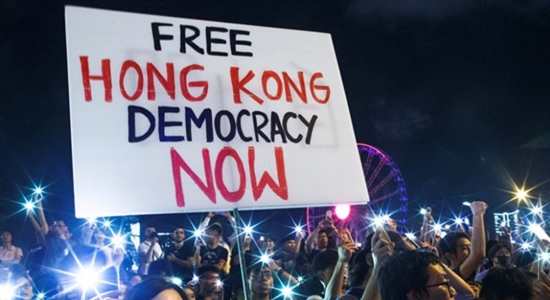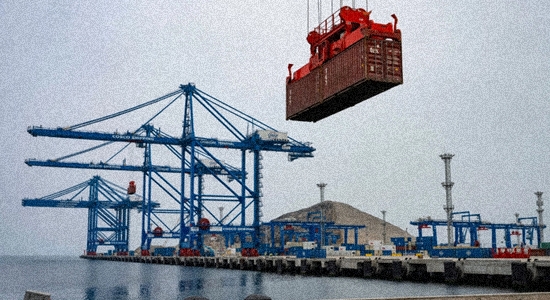
This is quite a misunderstanding: “The involvement of the US in the South China Sea using the Philippines is complicating the peaceful settlement of disputes. I support the Chinese government’s position that parties must uphold direct negotiations and consultations and no other parties are to interfere in the process.”
So says the chairman of the Philippine Institute for Peace, Violence and Terrorism Research in a February 2024 interview with Global Times, a propaganda outlet of the Chinese Communist Party.
“I continue to uphold the principle that the US should not be involved in the South China Sea issues, because the South China Sea issues can only be settled through direct negotiations and consultations of the parties concerned,” he iterated.
Oddly enough, everyone in territorial disputes with China is negotiating, but no one is getting anywhere.
The US itself has no “South China Sea issues.” Its two objectives in the South China Sea are to maintain free navigation of the seas and uphold treaty obligations. The US is not negotiating over these.
The Chinese, by contrast, negotiate while militarily asserting their territorial claims via harassment and occasional violence. Given Beijing’s hard line, it would be interesting to know what exactly is being negotiated. Perhaps China is negotiating for a Hong-Kong-type turnover of various islands. Perhaps for the terms under which competing claims will be surrendered.
Manila’s position is also puzzling. It takes a hard line itself on ownership of disputed islands, and it is matching Chinese military presence with a military presence of its own. What exactly is it negotiating?
Enter Japan
In January 2023, the NATO secretary-general visited Japan, after which the Japanese and Chinese foreign ministers pledged closer communication.
In February, China and Japan held their first security talks in four years.
In March, their foreign ministers met.
Then, in October, China sent four coast guard ships through the Senkaku Islands (shown above), ownership of which is disputed by Japan, China, and Taiwan. Counting from 2016, this appears to be China’s fifth provocation in the Islands.
Japan takes a very tough line itself.
“Against Chinese action to Senkaku Islands and other parts of the East China Sea, we have to demonstrate that the government of Japan is resolutely defending our territory with the greater number of Japanese coast guard vessels than that of China,” Japanese Defense Minister Nobuo Kishi told CNN in 2021.
And he added: “There is no territorial dispute relating to the Senkaku Islands between Japan and other countries.”
It’s one thing to contest claims to territory, another to deny that rival claims even exist. That’s a hard position.
In 2022, Japanese Prime Minister Fumio Kishida stated a corollary to Japan’s bottom line: “We strongly oppose any unilateral attempt to change the status quo by force, regardless of the location.” This seems connected with its “serious concern about reports of militarization, coercion and intimidation in the South China Sea.”
Beyond disputes
Japan’s position transcends territorial disputes, its own and others. Regardless of the merits of rival claims, Japan will allow no changes or adjustments to be made by force.
This month, Tokyo has started a multilateral initiative to provide “long-term support to maritime authorities in the Philippines, Indonesia, Malaysia and Vietnam” to counter China’s belligerence in the South China Sea.
NHK World-Japan News reports that “the Japan International Cooperation Agency will develop a 10-year plan to support the four nations, which the government regards as top priorities in terms of security…. Japanese officials will discuss the provision of drones, radar systems and patrol boats with each country, and also the development of human resources. A detailed plan is due by March next year.”
All four of these countries claim territory that is also claimed by China. All four suffer incursions and risk of violence.
Three years ago, China passed a law allowing its coast guard to use force against trespassers, enabling “an adjustment by force,” if you will. And here, in contrast, we see Japan enacting its policy of opposing the use of force to make change.
Can “drones, radar systems and patrol boats” militarily defend islands in the South China Sea? This does not seem to be their purpose.
Consider the main capabilities:
● Radar systems, which provide early warning of incursions.
● Drones, which provide observation, locations, video recordings—a record.
● Patrol boats, which provide interception by human witnesses and aid to any injured parties.
While the United States is playing a military role, using naval transit to enforce freedom of the seas, Japan is helping China’s neighbors to build cases about Chinese aggression.
Getting better
We have a too-patchy public record of China’s seaborne aggressions because very little comes from Malaysia, Vietnam, Indonesia; and from the Philippines, the record consists only of random news reports. Japan, it seems to me, will cleverly set up countries with detection and records-keeping equipment that greatly expands the volume of known incidents, thereby greatly expanding China’s reputation as an aggressor and greatly facilitating mobilization of anti-Chinese opinion.
Japan’s packages of observation and documentation can mark Chinese violations over time and across territories. The Philippines, Malaysia, Vietnam and Indonesia can gather extensive dossiers against China, providing a public record that makes the nature of China’s conduct unmistakable.
This development promises more than deadlocked negotiations—even if someone, somewhere, in some institute says that the truth complicates “the peaceful settlement of disputes.” □
James Roth works for a large defense contractor in Virginia.





